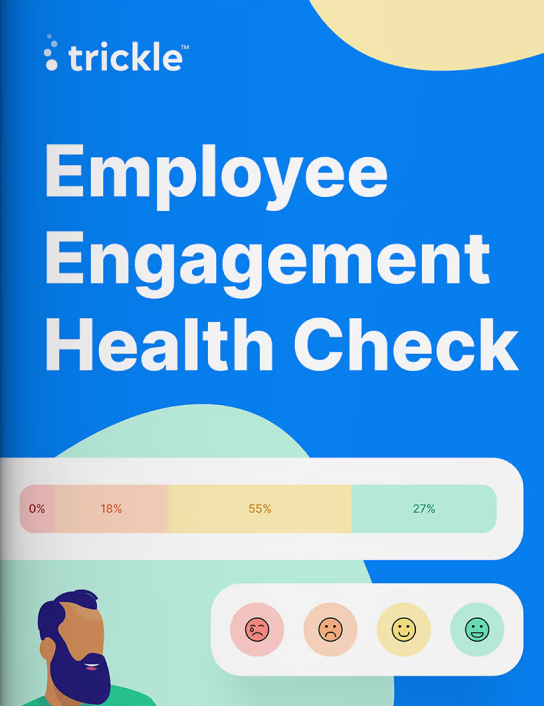How well does your company engage its employees?
Take your health check and find out.


Thinking small can have a big impact on workplace culture. No matter how large the end goal is, it often started out as a small idea and grew over time with input from employees.
An interesting example of how small wins can affect a company is Tesco. Back in 1993, the ad agency Lowe Howard-Spink created a famous slogan for the grocery giant. The phrase was, of course, one that has stood the test of time – “Every little helps.”
It’s a brilliantly simple, yet effective phrase that can be applied so well to so many situations. You could almost call it a motivational slogan. Some people may hear the slogan and think “I didn’t achieve my end goal today, but I am slightly closer than I was yesterday.”
One of those situations is the workplace. “Every little helps.” can be translated in an office environment to “Lots of small wins eventually add up to big wins.” Not quite as snappy as Tesco’s slogan but the sentiment is the same. Slower sustained, more controlled progress over time can be just as effective and even more so than faster, unsustainable progress.
Research carried out by the Harvard Business Review in 2011 shows that smaller regular signs of progress had a positive effect on the emotional state of their participants.
At times tackling large projects can seem daunting to employees for a variety of reasons. Employee morale can become low because the bar was set too high.
Setting big, aspirational goals can be good for workplace culture as it creates a unifying goal that everyone can get behind. Think of it as acting as an anchor on a boat.
However, it can sometimes be demotivating to the workplace if these goals are not achieved. Setting smaller goals, which are far more attainable and can be achieved regularly has a better impact on workplace culture, as long as these small wins are properly celebrated.
Whether setting smaller goals, or breaking down large goals into smaller ones, it’s critical that they are all seen as important. In any company, there will always be at the bare minimum, a slight disagreement on what success looks like on a personal level between employees.
Some employees might think “This small task that we did is pointless in the grand scheme of things, we still haven’t achieved our ultimate goal.” Let’s call these people, ‘Big Picture Thinkers’ or BPTs for short.
Whilst others might be thinking “Well, this was a small achievement, but it means we are one small step closer to our goal, let’s celebrate.” Let’s call these people “Little Pixel Thinkers” or LPTs for short.
A solution to unite the BPTs and LPTs when trying to implement a small win culture is to praise everyone in a language that they understand. If the company is already taking diversity and inclusion seriously, this will be a breeze.
For the BPTs, it may be that they aren’t praised for small wins as it wouldn’t have a positive effect on them. They may find it condescending that they’re praised for something they don’t respect on the same level. This could cause division and disharmony in the workplace.
However, they must be encouraged to praise the LPTs when there are small wins as it would have a more positive effect on them.
The BPTs are more likely to absorb praise well at the end of a big project. Whilst the LPTs need to be drip-fed their praise more over a longer period of time.
They both have differing views on small wins, but this framework can help them to work together harmoniously to achieve the goal.
This takes the pressure off the HR team to find exact matches to the culture. This type of integration means that everyone is included and can easily adapt to the culture, even if they may not seem like the best fit on the surface. Recruiting is also a bit easier, as companies will have more people to choose from.
The Disney Institute carried out an internal audit of their culture and found that positive reinforcement is more effective at improving employee morale and as a result, their performance.
Yes, they’re fully grown adults, but we find it very hard to believe that everyone doesn’t like being shown appreciation for their work. The trick is to show appreciation in a way that they appreciate.
As we touched on before in the previous section, the office, whether virtual or physical, isn’t a one-size-fits-all place. Employees’ varying personality types must be taken into account when showing appreciation for small wins.
Some people may not enjoy having to stand in front of a large group of people whilst they are celebrated for their work. An alternative method here may include:
There is a theory in social psychology that if a window on a building is broken, and left unrepaired, it increases the likelihood of more windows being broken. This is called the Broken Windows Theory. The neighbourhood in which this happens is irrelevant.
This can be applied to workplace wellbeing in the following manner –
A window on a building (an unhappy employee) that isn’t quickly repaired (had their feelings acknowledged and given help to solve the source of their unhappiness) can lead to more broken windows (unhappy employees). The type of organisation is irrelevant, from large blue-chip companies to young startups, if the first broken window isn’t fixed, the house (the company) will be under threat.
Our platform enables companies to:
Click here to book your free, no-obligation demo today.